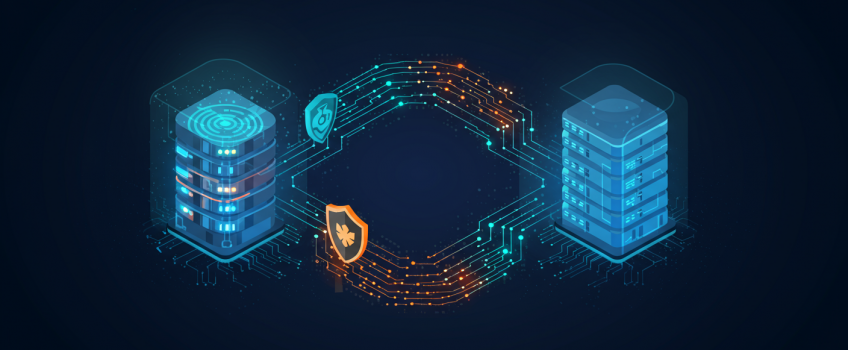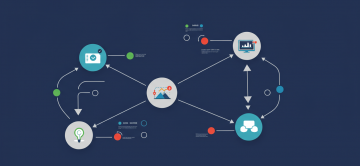Kafka Disaster Recovery & High Availability Strategies Guide

Disaster Recovery and High Availability Strategies for Mission-Critical Kafka Deployments
For businesses relying on Apache Kafka for their mission-critical data streams, unplanned downtime is not an option. Data loss or extended service interruption can lead to significant financial repercussions, damaged customer trust, and operational chaos. Therefore, robust High Availability (HA) and Disaster Recovery (DR) strategies are paramount. While Kafka is designed for fault tolerance within a single cluster, true resilience against large-scale failures (like data center outages) requires careful planning and specialized solutions.
This article delves into essential strategies for achieving high availability and comprehensive disaster recovery for your Apache Kafka deployments. We'll explore Kafka's native HA capabilities, discuss multi-cluster replication patterns, and highlight key considerations for designing a resilient architecture. ActiveWizards specializes in architecting and implementing such robust data platforms, ensuring business continuity for our clients even in the face of major disruptions.
Understanding Key Concepts: HA vs. DR
It's important to differentiate between High Availability and Disaster Recovery:
- High Availability (HA): Focuses on preventing downtime *within* a single data center or availability zone. Kafka achieves this through data replication across brokers, leader election, and fault detection. The goal is to keep the service operational despite individual component failures (e.g., a broker crash, disk failure).
- Disaster Recovery (DR): Focuses on restoring service *after* a large-scale disaster that incapacitates an entire data center or region. This typically involves failing over to a separate, geographically distant replica of your Kafka cluster and data.
Your RPO (Recovery Point Objective - how much data you can afford to lose) and RTO (Recovery Time Objective - how quickly you need to restore service) will heavily influence your HA/DR strategy.
Kafka's Native High Availability Features
Kafka's core design provides strong HA within a single cluster:
- Partition Replication: Each topic partition can be replicated across multiple brokers (
replication.factor). One broker acts as the leader for reads/writes, while others are followers, synchronously or asynchronously copying data. - In-Sync Replicas (ISR): A subset of replicas that are fully caught up with the leader. Producer acknowledgments (
acks=all) combined withmin.insync.replicasensure writes are committed to a minimum number of ISRs before being acknowledged, preventing data loss if the leader fails. - Leader Election: If a partition leader fails, the controller (a designated broker or KRaft quorum) elects a new leader from the ISRs, allowing producers and consumers to continue seamlessly after a brief transition.
- Rack Awareness: By configuring `broker.rack`, Kafka can distribute replicas across different physical racks (or availability zones in a cloud environment), protecting against rack-level failures.
For a topic with replication.factor=3, setting min.insync.replicas=2 ensures that a write is acknowledged only after at least two replicas (the leader and one follower) have it. If a leader fails, a follower with the data can take over. If you set min.insync.replicas=1 (default), and the leader fails before data replicates, data loss can occur despite acks=all. Always set `min.insync.replicas` to `N-1` for a replication factor of `N` to maximize availability without compromising durability, or to a value that balances your availability vs. durability needs for producer writes.
Disaster Recovery Strategies for Kafka
While native HA is excellent for local failures, DR requires cross-cluster or cross-region data replication. Several patterns exist:
1. Active-Passive Replication (Failover Cluster)
This is a common DR pattern where a primary (active) Kafka cluster serves all live traffic, and a secondary (passive/standby) cluster in a different region continuously replicates data from the primary.
- Replication Tools:
- MirrorMaker 2 (MM2): Kafka's built-in tool for cross-cluster replication. It uses the Kafka Connect framework and can replicate topics, consumer group offsets, and ACLs. MM2 is significantly improved over the original MirrorMaker.
- Confluent Replicator: A commercial tool from Confluent offering advanced features, management, and monitoring for replication.
- Third-party Solutions: Various vendors offer specialized Kafka replication tools.
- Failover Process:In a disaster, traffic is redirected to the passive cluster, which becomes active. This involves:
- Ensuring all data is flushed and replicated up to the RPO.
- Stopping producers from writing to the old primary.
- Reconfiguring producers and consumers to point to the new primary cluster.
- Restarting consumers from the last replicated offsets.
- Pros: Simpler to manage than active-active, clear failover target.
- Cons: Passive cluster resources are underutilized during normal operation. Failover can take time (RTO). Potential for some data loss (RPO) depending on replication lag.
2. Active-Active Replication (Stretch Cluster or Multi-Region Write)
In an active-active setup, multiple Kafka clusters (typically in different regions) can serve both read and write traffic. This is more complex to implement and manage correctly.
- True Active-Active (Single Logical Cluster Stretched):
- Requires very low latency and high bandwidth between regions, making it feasible only for geographically close data centers ("metro DR").
- Brokers from different regions form a single Kafka cluster.
- Challenges: Network partitions can lead to split-brain scenarios. Higher inter-broker latency impacts overall performance. Complex to manage.
- Bi-Directional Replication (Independent Clusters):
- Two or more independent Kafka clusters, each active, with bi-directional replication (e.g., using MM2 to replicate specific topics both ways).
- Applications typically write to their local cluster. Data needed globally is replicated.
- Challenges: Potential for conflicting writes if not carefully managed (e.g., ensuring unique message keys or application-level conflict resolution). Complex offset management for consumers that might switch clusters.
- Pros: Potentially lower RTO (as standby is already active), better resource utilization, load balancing across regions.
- Cons: Significantly more complex to design, implement, and operate. Higher risk of data consistency issues if not architected perfectly.
True active-active Kafka across distant regions is extremely challenging and rarely recommended due to latency constraints and consistency complexities. Bi-directional active-active replication between independent clusters is more common but requires meticulous application design to handle potential data conflicts and consumer offset translation. Active-Passive is often a more pragmatic and robust DR starting point for most organizations.
3. Asynchronous Replication with Backup & Restore (Cold Standby)
This is a less common approach for Kafka DR due to high RPO/RTO but can be considered for less critical data or as a last resort.
- Periodically back up Kafka data (log segments) and configurations to a remote location.
- In a disaster, build a new Kafka cluster and restore from backups.
- Pros: Lower cost for standby infrastructure.
- Cons: Very high RPO (data since last backup is lost). Very high RTO (time to build new cluster and restore). Not suitable for mission-critical real-time data.
Key Considerations for Your DR Strategy
- RPO and RTO: Define these business requirements first, as they drive all other decisions.
- Replication Lag: Monitor the lag of your cross-cluster replication tool closely. This directly impacts your RPO.
- Data Consistency: How will you ensure data consistency across clusters, especially if using active-active patterns?
- Consumer Offset Management: How will consumer offsets be replicated and managed during failover/failback? MM2 can help with `consumer.group.offset.sync.enable`.
- Client Failover: How will producers and consumers switch to the DR cluster? (DNS changes, configuration updates, service discovery). This needs to be automated as much as possible.
- Network Costs: Cross-region data transfer can be expensive. Factor this into your design.
- Testing and Drills: Regularly test your DR plan with drills to ensure it works and your team is prepared. Untested DR plans are often just plans.
- Failback Strategy: How will you return to your primary data center once it's restored? This can be as complex as the initial failover.
- Configuration Management: Keep configurations (topics, ACLs, quotas) synchronized or have a plan to apply them to the DR cluster.
Tools for Implementing Kafka DR
| Tool/Feature | Primary Use | Key DR Aspects |
|---|---|---|
| MirrorMaker 2 (MM2) | Cross-cluster data replication | Replicates topics, consumer group offsets (with caveats), configurations. Built into Kafka. |
| Confluent Replicator | Cross-cluster data replication (Commercial) | Advanced features over MM2, monitoring, schema registry replication. |
| Kafka Connect | Framework for data integration | Can be used for custom replication solutions, though MM2 is generally preferred for full cluster replication. |
| Rack Awareness | Intra-cluster HA | Distributes replicas across racks/AZs to survive local hardware failures. |
| DNS / Service Discovery | Client redirection | Essential for client failover to the DR cluster (e.g., updating CNAMEs, service registry entries). |
| Infrastructure as Code (IaC) | Cluster provisioning | Tools like Terraform, Ansible can help quickly provision/rebuild clusters in a DR scenario. |
DR Testing and Validation
A DR plan is useless if untested. Regularly perform DR drills:
- Tabletop Exercises: Walk through the DR plan with the team.
- Partial Failover Tests: Fail over a non-critical subset of topics or applications.
- Full Failover Simulation: Simulate a primary DC outage and fail over the entire Kafka service and dependent applications to the DR site.
- Measure RTO and RPO during tests.
- Document lessons learned and update the DR plan.
Manual failover processes are slow and error-prone during a real disaster. Invest in automating as much of the failover and failback procedures as possible using scripting, orchestration tools, and IaC. This drastically reduces RTO and human error.
Conclusion: Building Resilient Data Arteries
Ensuring high availability and robust disaster recovery for mission-critical Apache Kafka deployments is a multifaceted challenge that requires careful planning, appropriate tooling, and rigorous testing. By leveraging Kafka's native HA features for local resilience and implementing well-thought-out cross-cluster replication strategies for disaster recovery, businesses can build highly resilient data arteries capable of weathering significant disruptions.
Defining your RPO/RTO, choosing the right replication pattern (Active-Passive being a common, robust choice), and meticulous attention to details like offset management and client failover are key. For organizations seeking to implement or validate bulletproof Kafka HA/DR solutions, ActiveWizards offers deep expertise in designing and operationalizing these critical systems.
Fortify Your Mission-Critical Kafka with ActiveWizards
Is your Apache Kafka deployment prepared for the unexpected? ActiveWizards specializes in designing and implementing robust High Availability and Disaster Recovery solutions for Kafka, ensuring your data streams remain resilient and your business stays online. Protect your data, protect your business.



Comments (0)
Add a new comment: